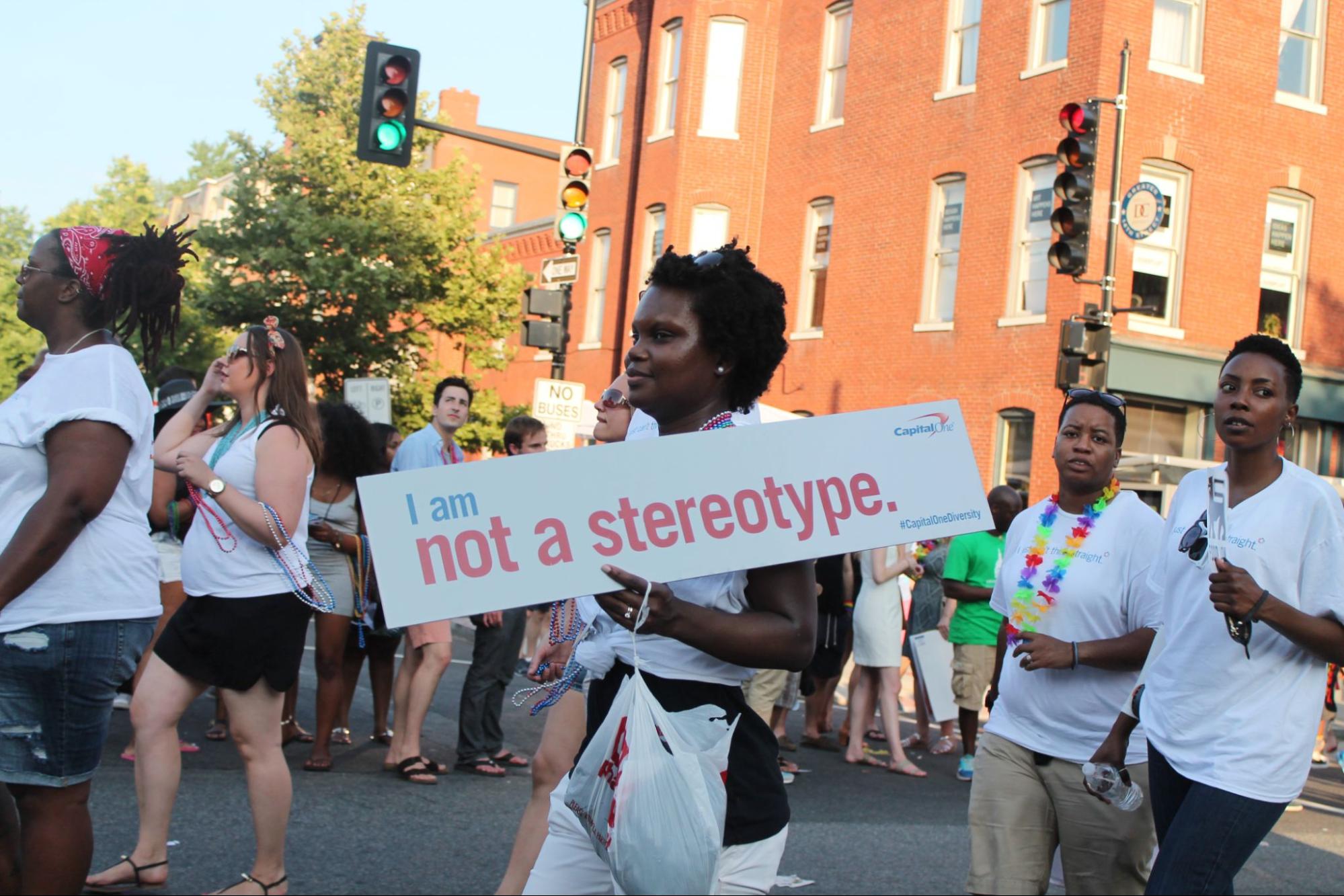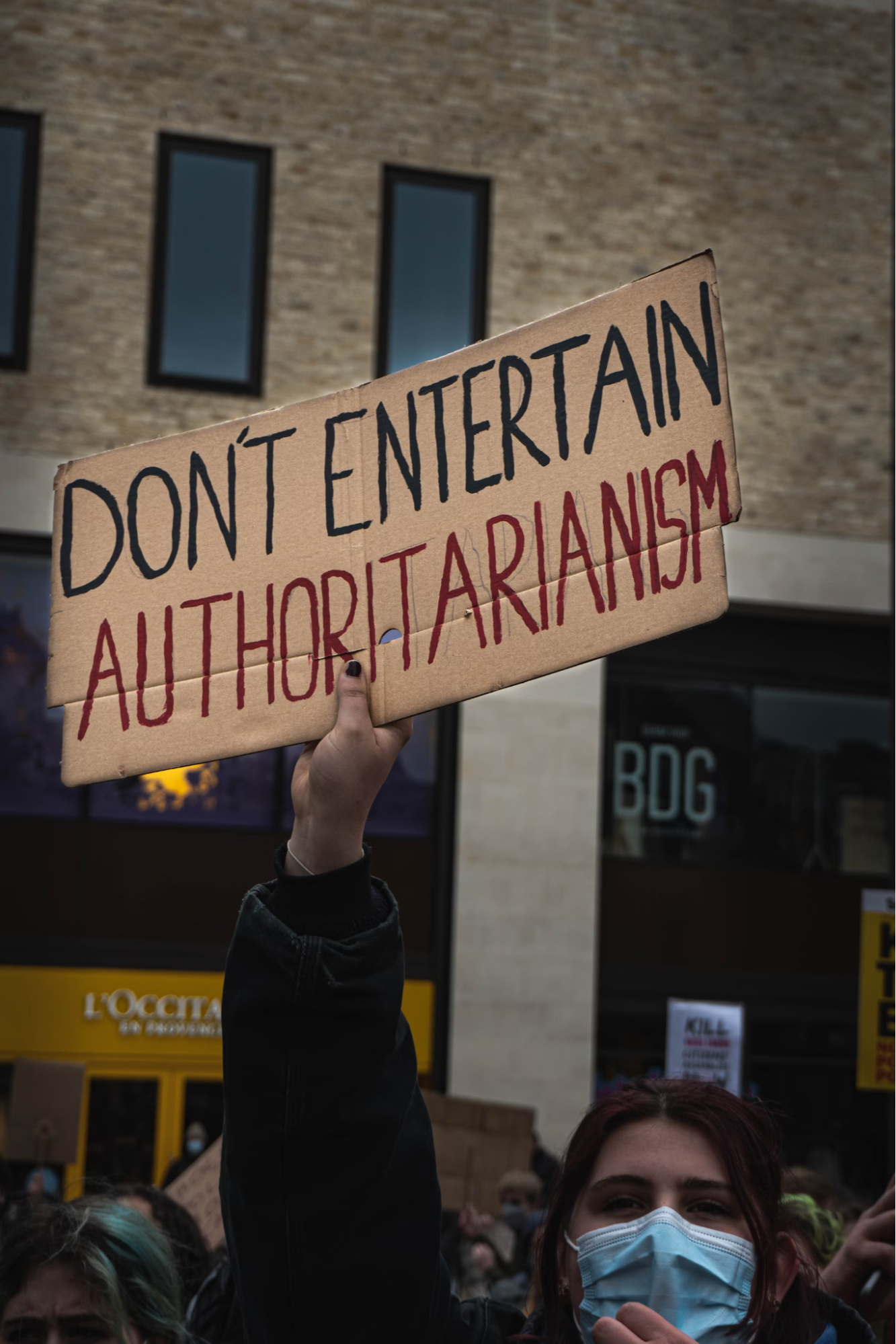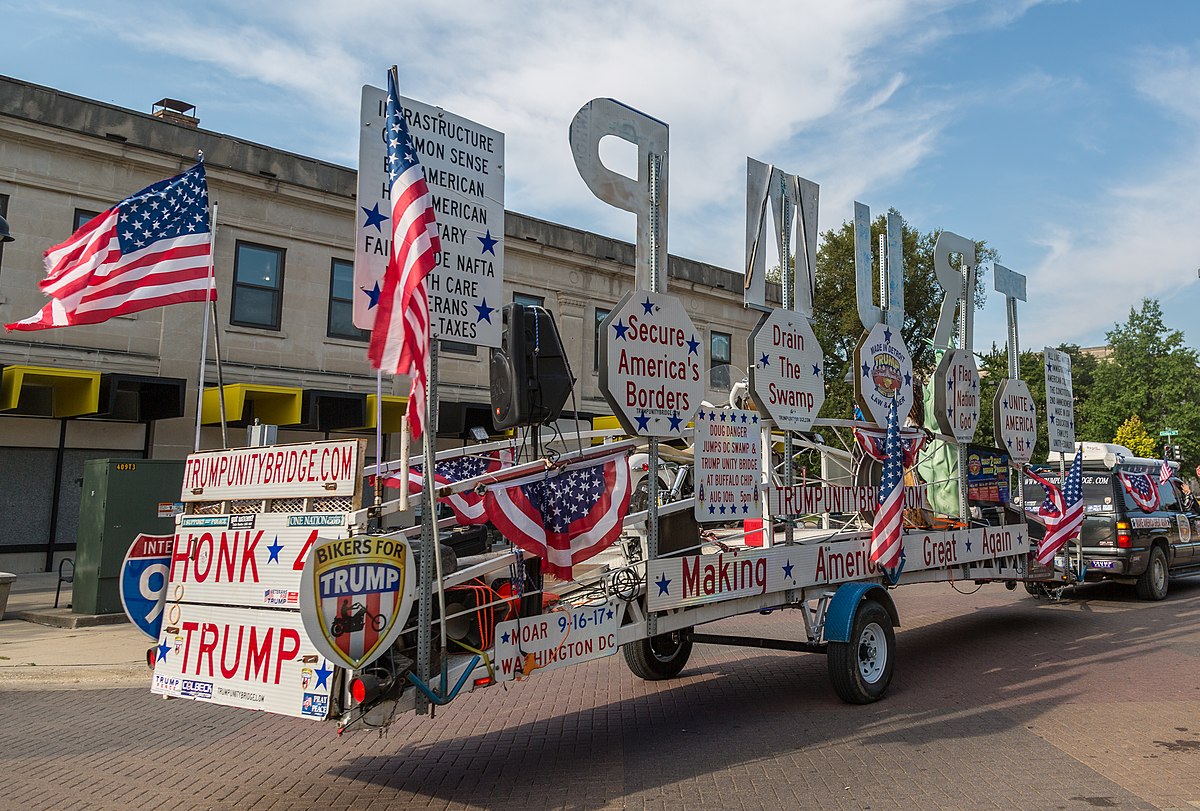2.2 What is Prejudice?
Prejudice is an individual attitude based on inflexible and irrational generalizations about a group of people and means “judging before.” It is usually learned by others. Prejudices can be positive or negative. Prejudice forms because we fail to examine the facts of whatever it is that we’re prejudiced against. Often, part of prejudice is stereotyping. Stereotypes are widely held beliefs or assumptions about a group of people based on perceived characteristics. While cultural and other differences do exist among the various American racial and ethnic groups, many of the views we have of such groups are unfounded and are stereotypes. An example of a stereotype is that boys are better at math and girls are better at reading. Prejudices that involve negative stereotypes of others can undermine the self-esteem of persons in those groups and also deprive them of opportunities (U.S. Department of Justice, 1992). Relatedly, implicit bias is observable when prejudicial views or stereotypes are used to make decisions. However, these decisions occur unconsciously (Anderson, 2017). In other words, we are not always aware that we are acting in a prejudicial manner toward another person or group because it is stored in our subconscious brain (Anderson, 2017).
Activity: The Impact of Stereotypes

Explore the website Stereotypes: Negative Racial Stereotypes and Their Effect on Attitudes Toward African Americans [Website], and answer the questions that follow.
Questions
- Were you already familiar with these stereotypes? Where do you think you learned them from? Explain.
- How significant do you think these stereotypes are in sustaining negative attitudes toward Black people in modern America? Explain.
- Consider some of your favorite or frequently watched movies and/or songs from childhood; looking back at them now, can you identify problematic characters, language, or inferences that contribute to racial stereotypes? Discuss.
Stereotypes are also likely to lead to microaggressions. To be clear, the “micro” in microaggression doesn’t mean they don’t cause serious harm. Microaggressions are defined as the everyday, subtle, intentional, or unintentional interactions or behaviors that communicate some sort of bias toward historically marginalized groups (Limbong, 2020). For example, a Black man being followed around in stores or having women clutch their purses tighter when they walk by would be a microaggression (McCabe, 2009). All people have the potential to commit microaggressions, even without realizing it. A person is not necessarily a bad person if they commit a microaggression, but rather, they are unaware of their biases and the impact that they can have. If you want to learn more about microaggressions, see the article “What Exactly Is a Microaggression?” in the Chapter Resources.
Building off these ideas, racial stereotypes are automatic and exaggerated mental pictures that we hold about all members of a particular racial group. When we stereotype people based on race, we don’t take into account individual differences. Because our racial stereotypes are so rigid, we tend to ignore or discard any information that is not consistent with the stereotype that we have developed about the racial group. When you encounter someone you do not know, you make split-second judgments based on what you see. Your brain instantly tries to determine whether an individual is trustworthy, safe, or will pose some sort of emotional, social, or physical risk. Ultimately, this impacts how we feel and act toward others (Morin, 2022). It is often difficult to change your way of thinking once you believe a stereotype, referred to as cognitive bias in psychology. For example, when we think something is true, we look for things to support our belief. This is because you’ll unintentionally look for evidence that affirms your beliefs and discount any evidence to the contrary.
For example, the Innocence Project found that Levon Brooks was wrongfully convicted of assaulting and killing his ex-girlfriend’s 3-year-old daughter in Mississippi in 1992. That same year, in a remarkably similar case, a man named Kennedy Brewer was accused of assaulting and killing his girlfriend’s 3-year-old daughter in the same county. Mr. Brewer was also wrongfully convicted. Despite the striking similarities in their cases, police homed in on Mr. Brooks and Mr. Brewer because, as the boyfriends, they were the “usual suspects” in many such cases. The police ignored other evidence and did not explore other leads. Twenty years later, DNA evidence identified the person who had committed both crimes and who had been a person of interest in the original investigations, resulting in the exonerations of both men (Meterko, 2021). The Innocence Project found that everyday people, including professionals in law enforcement, are vulnerable to cognitive biases.
Theories of Prejudice
Where do racial and ethnic prejudices come from? Why are some people more prejudiced than others? Scholars have tried to answer these questions at least since the 1940s, when the horrors of Nazism were still fresh in people’s minds. Theories attempt to explain things happening around us and how certain things are related. They also help us understand patterns in social behavior, so in this case, understanding what makes people more likely to be prejudiced. This understanding, in turn, can help us better address or prevent them.
One of the first theories of prejudice was written by Theodor Adorno, who fled Nazi Germany and concluded that the key to prejudice lay in what is called the authoritarian personality (Adorno et al., 1950). They described authoritarians as rigid thinkers who obey authority, see the world as black and white, and strictly adhere to social rules and hierarchies. They argued authoritarian people were more likely than others to harbor prejudices (Adorno et al., 1950; MacFarland, 2010). Adorno said authoritarian personalities develop in childhood if parents practice harsh discipline. Individuals with authoritarian personalities emphasize obedience to authority, rigid adherence to rules, and low acceptance of people (out-groups) not like themselves. Allport (1954) said that if people reject one out-group, then they will reject other out-groups.

Sibley and Duckitt (2008) found strong racial and ethnic prejudice among such individuals. For example, a politically conservative form of authoritarianism, known as “right-wing authoritarianism,” does correlate with prejudice. Well-designed studies in South Africa, Russia, Canada, the United States, and elsewhere have found that right-wing authoritarianism is associated with a variety of prejudices (Altemeyer, 1996; Duckitt and Farre, 1994; McFarland, Ageyev, and Abalakina, 1993). But whether their prejudice stems from their authoritarian personalities or instead from the fact that their parents are probably prejudiced themselves remains an important question. Further, people who view the social world hierarchically are more likely than others to hold prejudices toward groups that they see as less than themselves. This is especially true of people who want their group to dominate and be superior to other groups, also known as social dominance orientation (Pratto, Sidanius, Stallworth, and Malle, 1994). Social dominance orientation tends to correlate with prejudice even more strongly than does right-wing authoritarianism, and studies have linked it to anti-Black and anti-Arab prejudice, sexism, nationalism, opposition to gay rights, and other attitudes concerning social hierarchies (Altemeyer, 1998; Sidanius, Levin, Liu, and Pratto, 2000; Sidanius and Pratto, 1999). Finally, Adorno and his coauthors were correct in pointing out that rigid categorical thinking is a central ingredient in prejudice.
Another early and still popular social-psychological explanation is called scapegoat theory, or sometimes frustration theory (Dollard, Doob, Miller, Mowrer, and Sears, 1939). Individuals who experience various kinds of problems become frustrated and tend to blame their troubles on groups that are often disliked in the real world (e.g., racial, ethnic, and religious minorities), thus becoming scapegoats for the real sources of people’s misfortunes. During the COVID-19 pandemic, growing fear and misinformation surrounding where the virus originated led to a rise in racist acts against Asian Americans. For example, a man in Midland, Texas, attacked an Asian American family shopping at a Sam’s Club store, stabbing three members of the family, including a 2-year-old and a 6-year-old child, as well as an employee. The attacker said that he targeted the family because he believed, based on the family’s race, that they were spreading the COVID-19 virus. The FBI categorized the attack as a hate crime, and more generally warned of a potential surge in bias-based attacks on Asian Americans (Wang, 2020).
History teaches us that the scapegoating of immigrants and their U.S.-born descendants is nothing new. Throughout history, immigrants have been blamed for infectious diseases (Kraut, 2020). Irish immigrants were blamed for cholera outbreaks in the 1830s, Jewish immigrants for tuberculosis in the late 19th century, and Italian immigrants for polio in the early 20th century. In 1900, fears of the bubonic plague in San Francisco spurred calls for Chinatown to be burned to the ground and, horrifically, public health officials forcibly seized Chinese residents on the streets and injected them with an experimental vaccine (Litvinoff, 1988; Wang, 2020). In 1982, a Chinese American named Vincent Chin was beaten to death by two white autoworkers in a Detroit suburb, one of whom hatefully shouted, “It’s because of you little motherfuckers that we’re out of work!” (ACLU, 2024). His attackers believed he was responsible for the loss of jobs in the U.S. auto industry based on his perceived identity. As you can see, scapegoating at a mass level has been quite common.
On October 7, 2023, Hamas militants launched an unprecedented cross-border attack on Israel. Civilians were held captive, including women and young children. At a dance festival, three miles from the border fence, Hamas militants killed more than 260 people. Hamas, a militant group that has controlled the Gaza Strip since 2007, said the aim of the attack was “to free Palestinian prisoners, stop Israeli aggression on al-Aqsa Mosque, and to break the siege on Gaza.” The roots of conflict predate the establishment of the state of Israel 75 years ago and the founding of Hamas in 1987. Palestinians and Israelis consider the territory between the Jordan River and the Mediterranean Sea as their own (Sands and Suliman, 2023). The war in the Middle East is spurring attacks and heightening fear in Muslim, Jewish, and Arab (especially Palestinian) communities across the United States (Cineas, 2023). Islamophobia and antisemitism are seeing sharp increases across the United States after the conflict between Israel and Hamas. According to a new report by the Council on American-Islamic Relations (CAIR), the Muslim civil rights and advocacy organization received a total of 1,283 requests for help and reports of bias between 7 October and 4 November. In Illinois, about a week after Hamas militants attacked Israel, a landlord stabbed his tenants – 6-year-old Wadea al-Fayoume and his mother, Hanaan Shahin – more than two dozen times while shouting anti-Muslim rhetoric, according to the police (Cineas, 2023). If you want to learn more about the rise in hate crimes in the United States, read the article “‘History Repeating Itself’: How the Israel-Hamas War is Fueling Hate against Muslims and Jews” in the Chapter Resources.
One popular explanation emphasizes conformity and socialization, also called social learning theory. In this view, prejudiced people are merely conforming to the culture in which they grow up, and prejudice is the result of socialization from parents, peers, the news media, and other various aspects of their culture. Supporting this view, studies have found that people tend to become more prejudiced when they move to areas where people are very prejudiced and less prejudiced when they move to locations where people are less prejudiced (Aronson, 2008). According to a number of psychological and sociological theories, individuals are susceptible to social influence from their immediate social environment, especially during adolescence. Research found that prejudice within a peer network will influence individual prejudice (Hjerm, Eger, and Danell, 2018). Adults surrounding young children can help prevent the development of prejudice through socialization.
Another sociological explanation emphasizes economic and political competition and is commonly called group threat theory (Quillian, 2006; Hughes and Tuch, 2003). In this view, prejudice arises from competition over jobs and other resources and disagreement over various political issues. When groups compete with each other, they become hostile toward each other. Amid such hostility, it may be easy to become prejudiced against a group that one perceives as threatening their economic or political standing. A popular version of this basic explanation is Olzak’s (1992) ethnic competition theory, which holds that ethnic prejudice and conflict increase when two or more ethnic groups compete for jobs, housing, and other goals. We can see this today when examining changes in the economy. Blaming immigrants for the nation’s woes is part of American history, especially in hard economic times like today. During the first Trump presidency, there was an increase in anti-immigrant sentiment, particularly in places that have the largest number of immigrants. Public opinion surveys indicate that the public regards undocumented immigrants with increasing disfavor because people think they are taking jobs from citizens (ACLU, 2023). However, Americans generally agree that immigrants, whether documented or not, mostly do the work that U.S. citizens do not want. This is particularly true when it comes to undocumented immigrants. About three-quarters of adults (77 percent) say undocumented immigrants fill jobs U.S. citizens do not want, according to a Pew Research Center (Krogstad, Lopez, and Passel, 2020). However, when times are hard, we see increased anti-immigrant prejudice because of the growing number of immigrants (Bauer, 2009).
As might be clear, the competition explanation is the macro or structural equivalent (see Chapter 1 for a refresher on macro-level explanations) of the frustration/scapegoat theory already discussed. White mob violence against Chinese immigrants in the 1870s began after the railroad construction that employed so many Chinese immigrants slowed, and the Chinese began looking for work in other industries. White people feared that the Chinese would take jobs away from white workers and that their large supply of labor would drive down wages. Their assaults on the Chinese killed several people and prompted the passage by Congress of the Chinese Exclusion Act in 1882, which prohibited Chinese immigration (Dinnerstein and Reimers, 2009). As you can see, the roots of prejudice are many and varied. We are continuing to study why people are prejudiced and further exploring ideas such as the role of personality, how much prejudice is learned, and the group threat hypothesis. Research on these factors suggests that prejudiced attitudes are not limited to a few pathological or misguided individuals; instead, prejudice is an outgrowth of normal human functioning, and all people are susceptible to one extent or another.

Check Your Knowledge
Licenses and Attributions for What is Prejudice?
Open Content, Shared Previously
“What is Prejudice?” is adapted from “Race and Ethnicity” by Anonymous, Sociology: Understanding and Changing the Social World (Barkan), which is licensed under CC BY-NC-SA 4.0. Modifications by Shanell Sanchez, revised by Jessica René Peterson, licensed under CC BY-NC-SA 4.0, include revising for clarity, recency, and brevity.
Figure 2.2. “IMG_6476” by Elvert Barnes is licensed under CC BY-SA 2.0.
Figure 2.3. Image by Kyle Bushnell is licensed under the Unsplash License.
Figure 2.4. “Trump Unity Bridge” by Tony Webster is licensed under CC BY-SA 2.0.
an individual attitude based on inflexible and irrational generalizations about a group of people and literally means “judging before.”
widely held beliefs or assumptions about a group of people based on perceived characteristics.
automatic and exaggerated mental pictures that we hold about all members of a particular racial group.
the everyday, subtle, intentional or unintentional interactions or behaviors that communicate some sort of bias toward historically marginalized groups
a category of people grouped because they share inherited physical characteristics that are identifiable, such as skin color, hair texture, facial features, and stature
the difficulty of changing a person’s way of thinking once they believe a stereotype, which can cause them to look for patterns to support that belief
scientific explanations of things happening around us, such as patterns in social behavior, and how certain things are related
rigid thinkers who obey authority, see the world as black and white, and strictly adhere to social rules and hierarchies
social-psychological explanation of prejudice stating that individuals who experience various kinds of problems become frustrated and tend to blame their troubles on groups that are often disliked in the real world (e.g., racial, ethnic, and religious minorities), thus becoming scapegoats for the real sources of people’s misfortunes. Also called frustration theory.
Frustation Theory; Individuals who experience various kinds of problems become frustrated and tend to blame their troubles on groups that are often disliked in the real world (e.g., racial, ethnic, and religious minorities), thus becoming scapegoats for the real sources of people’s misfortunes.
property or violent crimes that are motivated by bias, usually related to one’s actual or perceived identity regarding race, ethnicity, color, country of origin, religion, gender or gender identity, sexuality, or disability
the process through which people are taught to be proficient members of a society.
theory emphasizing conformity and socialization, which suggests prejudiced people are merely conforming to the culture in which they grow up, and prejudice is the result of socialization from parents, peers, the news media, and other various aspects of their culture.
a group’s shared practices, values, and beliefs.
sociological theory that prejudice results from hostility between groups engaged in competition over jobs, resources, and disagreement over various political issues
social research focusing on trends among and between large groups and societies

